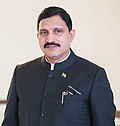| No. | Portrait | Minister
(Birth-Death)
Constituency | Term of office | Political party | Ministry | Prime Minister |
|---|
| From | To | Period |
|---|
| Minister in the Department of Ocean Development |
|---|
| 1 | | 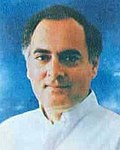 | Rajiv Gandhi
(1944–1991)
MP for Amethi
(Prime Minister) | 31 December
1984 | 2 December
1989 | 4 years, 336 days | Indian National Congress (I) | Rajiv II | | Self |
|---|
| 2 | | 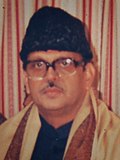 | Vishwanath Pratap Singh
(1931–2008)
MP for Fatehpur
(Prime Minister) | 2 December
1989 | 10 November
1990 | 343 days | Janata Dal | Vishwanath | | Self |
|---|
| 3 | |  | Chandra Shekhar
(1927–2007)
MP for Ballia
(Prime Minister) | 10 November
1990 | 21 June
1991 | 223 days | Samajwadi Janata Party (Rashtriya) | Chandra Shekhar | | Self |
|---|
| 4 | | 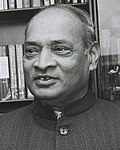 | P. V. Narasimha Rao
(1921–2004)
MP for Nandyal
(Prime Minister) | 21 June
1991 | 16 May
1996 | 4 years, 330 days | Indian National Congress (I) | Rao | | Self |
|---|
| 5 | | 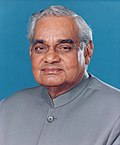 | Atal Bihari Vajpayee
(1924–2018)
MP for Lucknow
(Prime Minister) | 16 May
1996 | 1 June
1996 | 16 days | Bharatiya Janata Party | Vajpayee I | | Self |
|---|
| 6 | |  | H. D. Deve Gowda
(born 1933)
Rajya Sabha MP for Karnataka
(Prime Minister) | 1 June
1996 | 21 April
1997 | 324 days | Janata Dal | Deve Gowda | | Self |
|---|
| 7 | |  | Inder Kumar Gujral
(1919–2012)
Rajya Sabha MP for Bihar
(Prime Minister) | 21 April
1997 | 18 March
1998 | 331 days | Gujral | | Self |
|---|
| (5) | |  | Atal Bihari Vajpayee
(1924–2018)
MP for Lucknow
(Prime Minister) | 19 March
1998 | 3 February
1999 | 321 days | Bharatiya Janata Party | Vajpayee II | | Atal Bihari Vajpayee |
|---|
| 8 | |  | Murli Manohar Joshi
(born 1934)
MP for Allahabad | 3 February
1999 | 13 October
1999 | 252 days |
|---|
| (5) | |  | Atal Bihari Vajpayee
(1924–2018)
MP for Lucknow
(Prime Minister) | 13 October
1999 | 22 November
1999 | 40 days | Vajpayee III |
|---|
| (8) | |  | Murli Manohar Joshi
(born 1934)
MP for Allahabad | 22 November
1999 | 22 May
2004 | 4 years, 182 days |
|---|
| 9 | | 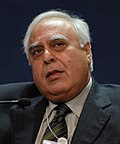 | Kapil Sibal
(born 1948)
MP for Chandni Chowk
(MoS, I/C) | 23 May
2004 | 29 January
2006 | 1 year, 251 days | Indian National Congress | Manmohan I | | Manmohan Singh |
|---|
| Minister of Ocean Development |
|---|
| (9) | |  | Kapil Sibal
(born 1948)
MP for Chandni Chowk | 29 January
2006 | 12 July
2006 | 164 days | Indian National Congress | Manmohan I | | Manmohan Singh |
|---|
| Minister of Earth Sciences |
|---|
| (9) | |  | Kapil Sibal
(born 1948)
MP for Chandni Chowk | 12 July
2006 | 22 May
2009 | 2 years, 314 days | Indian National Congress | Manmohan I | | Manmohan Singh |
|---|
| 10 | |  | Prithviraj Chavan
(born 1946)
Rajya Sabha MP for Maharashtra
(MoS, I/C) | 28 May
2009 | 10 November
2010 | 1 year, 166 days | Manmohan II |
|---|
| (9) | |  | Kapil Sibal
(born 1948)
MP for Chandni Chowk | 10 November
2010 | 19 January
2011 | 70 days |
|---|
| 11 | |  | Pawan Kumar Bansal
(born 1948)
MP for Chandigarh | 19 January
2011 | 12 July
2011 | 174 days |
|---|
| 12 | |  | Vilasrao Deshmukh
(1945–2012)
Rajya Sabha MP for Maharashtra | 12 July
2011 | 10 August
2012 | 1 year, 29 days |
|---|
| 13 | |  | Vayalar Ravi
(born 1937)
Rajya Sabha MP for Kerala | 10 August
2012 | 28 October
2012 | 79 days |
|---|
| 14 | |  | S. Jaipal Reddy
(1942–2019)
MP for Chevella | 28 October
2012 | 26 May
2014 | 1 year, 210 days |
|---|
| 15 | |  | Jitendra Singh
(born 1956)
MP for Udhampur
(MoS, I/C) | 27 May
2014 | 9 November
2014 | 166 days | Bharatiya Janata Party | Modi I | | Narendra Modi |
|---|
| 16 | |  | Harsh Vardhan
(born 1954)
MP for Chandni Chowk | 9 November
2014 | 30 May
2019 | 6 years, 240 days |
|---|
31 May
2019 | 7 July
2021 | Modi II |
| (15) | |  | Jitendra Singh
(born 1956)
MP for Udhampur
(MoS, I/C) | 7 July
2021 | 18 May
2023 | 1 year, 315 days |
|---|
| 17 | |  | Kiren Rijiju
(born 1971)
MP for Arunachal West | 18 May
2023 | 9 June
2024 | 1 year, 22 days |
|---|
| (15) | |  | Jitendra Singh
(born 1956)
MP for Udhampur
(MoS, I/C) | 10 June
2024 | Incumbent | 1 year, 174 days | Modi III |
|---|
|


























